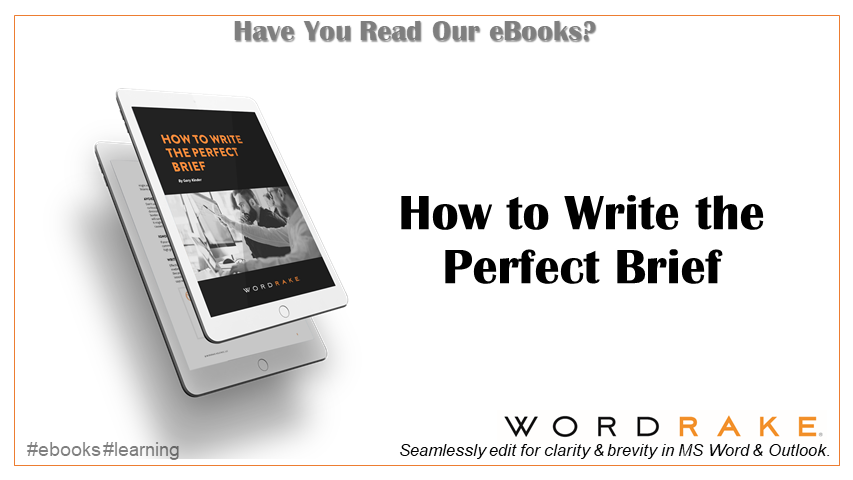The issue statement is the first substantive content in a legal brief.[1] It’s also the first opportunity to shape how the court and its staff view our case. So the last thing we want is for readers to struggle or lose sight of our message.
No matter which style we prefer—a single-sentence question, the ultratraditional Whether fragment, or (preferably) Bryan Garner’s multi-sentence “deep issue”—we serve our readers well by cleaning out surplus. Too often, issue statements grow so unwieldy that we rob ourselves of this chance to make an impact. Even strong brief writers sometimes bog down their issues with unnecessary details—details that derive more from habit than necessity.
Editing the Issue Statement
Let’s see how we might transform a draft issue statement. For our before version, I’ve chosen an issue statement from a real appellate brief that I found online (and changed the parties’ names and location):
Should the trial court have granted the University of Anystate Medical Center’s (“UAMC’s”) Motion for Summary Judgment in this Anystate Tort Claims Act case where the Smiths failed to strictly comply with the mandatory notice provision found in Any. Code Ann. § 11-46-11 (2)(a)(ii), which required them to serve their notice of claim only upon UAMC’s Chief Executive Officer, Vice President for Health Affairs, Jennifer Bradstreet, M.D., thereby resulting in the running of the one-year statute of limitations on their claims under Any. Code Ann. § 11-46-11(3)(a)?
This issue statement has some modest attributes. For instance, it benefits from being in lowercase instead of the ALLCAPS style that was once so prevalent. It uses under instead of pursuant to. It also goes beyond the undeniably clear yet empty style of “Should the trial court have granted summary judgment?”
But we have some big opportunities to improve flow and clarity:
- remove the parenthetical;
- avoid the acronym;
- remove the statute citations—there’ll be plenty of time for them in the brief;
- tighten up the hospital official’s identification, which takes more than ten words;
- lowercase the motion title (overcapitalization hurts clarity);
- delete thereby, which is unnecessary and stuffy;
- prefer simpler word choices, such as on instead of upon;
- consider removing the lengthy lower-court reference;
- remove other surplus.
Starting with just those edits, the issue statement would look like this:
Should the trial court have granted Was the University of Anystate Medical Center’s (“UAMC’s”) entitled to Motion for summary judgment of the Smiths’ in this Anystate Tort Claims Act claim case where [when?] the Smiths failed to strictly comply with the Act’s mandatory notice provision found in Any. Code Ann. § 11-46-11 (2)(a)(ii), which required them to serve their notice of claim only upon UAMC’s the Center’s Chief Executive Officer, Vice President for Health Affairs, Jennifer Bradstreet, M.D., thereby resulting in the running of the one-year statute of limitations’ expiration? on their claims under Any. Code Ann. § 11-46-11(3)(a)?
A clean version would look like this:
Was the University of Anystate Medical Center entitled to summary judgment of the Smiths’ Tort Claims Act claim when the Smiths failed to strictly comply with the Act’s mandatory notice provision, which required them to serve notice of their claim on the Center’s Chief Executive Officer, resulting in the one-year statute of limitations’ expiration?
As you see, our edits have shed more light on the substance. And now we see that the issue statement is a bit conclusory. We might also revisit the sequence of ideas and quote the controlling statutory terms for emphasis. And we might enhance persuasion by presenting some facts that show why the court shouldn’t have allowed the untimely claim to go forward (though for this hypertechnical issue, persuasion isn’t easy).
After More Edits
With the additional edits mentioned above, our working draft might look like this:
Was the Smiths’ suit against the University of Anystate Medical Center timely under the Tort Claims Act, which requires that claimants “must” serve notice on the defendant’s “chief executive officer” within one year to preserve their claim, when the Smiths did not serve timely notice on the Medical Center’s chief executive officer but, instead, notified other employees?
This is 57 words. It still makes readers put on their thinking caps, but it’s 30 words shorter than the original, which was 87 words. And it lays bare the core question.
For the Bryan Garner fans out there, we can convert our working draft to a multi-sentence statement, which takes the form of a modified deductive syllogism:
Under the Anystate Tort Claims Act, claimants “must” serve notice of their claim on the defendant’s “chief executive officer” within one year. The Smiths did not serve notice on the University of Anystate Medical Center’s chief executive officer within a year but, instead, notified other employees. Was the Smiths’ claim timely?
This version is 51 words, which is 36 fewer words than the original. Again, this technical argument is a tough sell, but our revised issue statement will, we hope, serve our reader and our client.
A Concise, Compelling Story
The takeaway: as your issue statement evolves, don’t just add to it—subtract, too. Thoughtful subtractions improve focus. As shown above, we’ve removed 36 words while converting a typical issue statement into the deep-issue format. That format will help you break down complex legal questions into digestible parts—from the controlling law to the significant facts, right through to the question to be decided—building a compelling narrative that is both informative and convincing.
All this editing is worth the time and effort. Though short, the issue statement can influence a case’s outcome.[2] So expect to revise it multiple times as you work through your brief. Each revision offers a chance to refine and clarify the statement, making sure it concisely encapsulates the dispute while persuading the reader of your argument’s merit.
[1] Though we associate issue statements with appellate briefs, some trial courts require them, too. For instance, the local rules for my hometown federal court, the U.S. District Court for the Eastern District of Michigan, provide that “[a] brief supporting a motion or response must, at the beginning, contain a concise statement of the issues presented.” E.D. Mich. R. 7.1(d)(2).
[2] See Antonin Scalia & Bryan A. Garner, Making Your Case: The Art of Persuading Judges 83 (2008) (“Many advocates fail to appreciate that the outcome of a case rests on what the court understands to be the issue the case presents.”)
About the Author
Mark Cooney chairs the writing department at Thomas M. Cooley Law School. He was Editor in Chief of The Scribes Journal of Legal Writing for six volumes and now serves as a Senior Editor. He is author of Sketches on Legal Style (Carolina Academic Press 2013) and coauthor of The Case for Effective Legal Writing (Carolina Academic Press 2024). He has published more than 50 articles or book chapters on legal writing and other topics. His works have appeared in The Green Bag, Legal Communication & Rhetoric: JALWD, the Scribes Journal, and elsewhere, and have been quoted and cited by state and federal courts.








